

Local Places of Interest
Amat is well-situated for the enjoyment and exploration of the northern Highlands. We have listed below a number of places that you may find of interest.
Golf Clubs
There are golf clubs at Bonar Bridge (12 miles), Dornoch (24 miles), Tain (23 miles), Golspie (31 miles) and Brora (37 miles). Web links will open in a new page.
Before embarking on a long journey, it is advisable to telephone ahead and check that place you wish to visit is open.
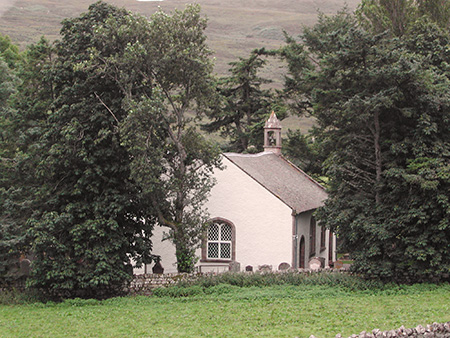
Croick Church (1 mile)
The Church and its minister figured prominently in the Clearance of Glencalvie in 1845, a tragic event that is recorded in messages scratched on its east window.
Click to visit website: This window New window
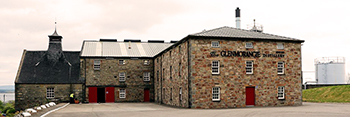
Braveheart, CC BY-SA 4.0, via Wikimedia Commons
Glenmorangie Distillery (22 miles)
The whisky makers are known as the Distillers of Tain, they’ve been honing their craft for more than 175 years. Visit the distillery and take a tour. You will journey through all stages of whisky creation, from mashing and fermenting to distilling and maturation
Click to visit website: This window New window

Photo © Richard Sutcliffe (cc-by-sa/2.0)
Tain through Time (23 miles)
Tain Through Time is a fascinating Highland museum and visitor centre set in the grounds of the beautiful medieval church of St Duthac. Explore the history of Pilgrimages and local life from prehistoric times to the more recent past.
Click to visit website: This window New window
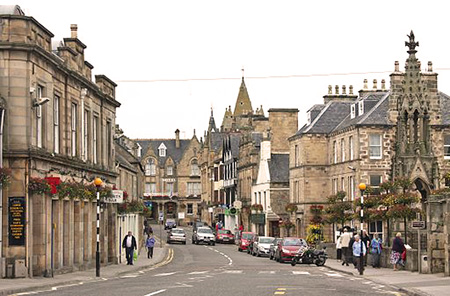
Postdlf, CC BY-SA 3.0, via Wikimedia Commons
Royal Burgh of Tain (23 miles)
We are justifiably proud of our historical heritage as the birthplace of the medieval saint, St Duthac and to our aged claim to be the oldest Royal Burgh in Scotland, with our Charter dating back to 1066.
Click to visit website: This window New window
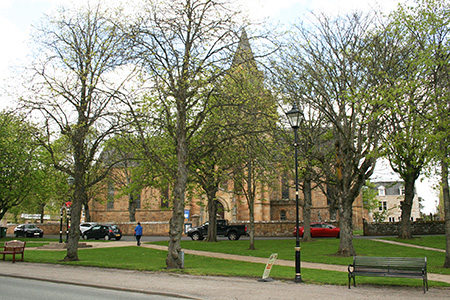
Dornoch Cathedral
Royal Burgh of Dornoch (23 miles)
Dornoch is an east coast town by-passed by the A9, and as a result all too easy to overlook. It can be a busy place, but if you explore it in the evening or early morning, with fewer cars and fewer people, you begin to appreciate the beauty of the honey-coloured stone from which so many of Dornoch's buildings are constructed.
To the south is a wonderful run of buildings including the Old Town Jail and the excellent Dornoch Castle Hotel, whose origins are not as a castle but rather as the bishop's palace built to accompany the cathedral.
A little more recently, Dornoch achieved a few days of fame on the world stage when the pop star Madonna chose Dornoch Cathedral as the location for her son's christening in December 2000 and the nearby Skibo Castle for her marriage.
Click to visit website: This window New window
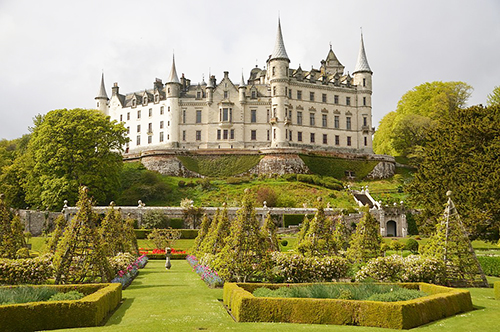
Photo: Andrew Tryon
Dunrobin Castle and Gardens, Golspie, Sutherland
Dunrobin Castle (33 miles)
Dunrobin Castle is the most northerly of Scotland's great houses and the largest in the Northern Highlands with 189 rooms. Dunrobin Castle is also one of Britain's oldest continuously inhabited houses dating back to the early 1300s, home to the Earls and later, the Dukes of Sutherland.
Take a self-guided tour through the castle and visit the garden and Victorian Museum.
Click to visit website: This window New window
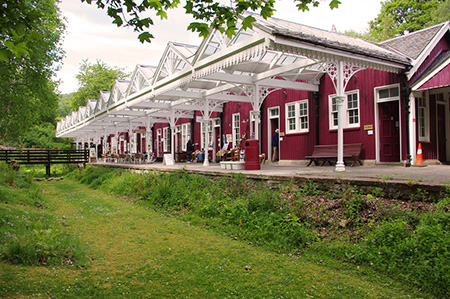
Photo: © Ian Taylor cc-by-sa/2.0
Highland Museum of Childhood, Strathpeffer (39 miles)
As well as the Museum of Childhood, the Old Station is also home to the Goods Shed. Custom designed and built, the Goods Shed was opened by the Earl of Wessex in 2010 and houses the museum’s collections store and educational facilities.
Click to visit website: This window New window

Inverness Castle as viewed from
the west across the River Ness.
Diliff, CC BY-SA 3.0, via Wikimedia Commons
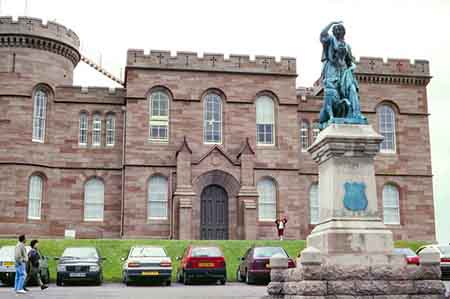
Inverness Castle
with statue of Flora MacDonald
Photo © Jeff Buck
geograph.org.uk CC BY-SA-2.0
Inverness Castle (46 miles)
Inverness Castle was built on the site of an earlier fortress in 1835 and sits on a low cliff overlooking the River Ness and the cathedral on the opposite bank.
It is thought that 11th-century castle which featured in Shakepeare's play Macbeth (even though there is no historical evidence to suggest that it was where Duncan I was murdered) was in fact located to the east of the present castle.
Originally built of wood, it was replaced by a fortress of stone on Castle Hill. Apparently there have been sightings of the ghost of King Duncan walking along the banks of the River Ness in full regalia.
Until early 2020, it was used as the sheriff's court. This has moved to new premises, so there are now plans to transform the castle into a major visitor attraction with galleries, museum, shops, etc. Inverness Castle - Spirit of the Highlands is the new website which contains information about the history of the castle and plans for its re-development.
You have the chance to visit part of the castle tower to see panoramic views of the river and city. Climb 95 steps to the top of the tower and access the viewing platform. Please check website for season and opening times. Online booking is essential.
Click to visit website: This window New window
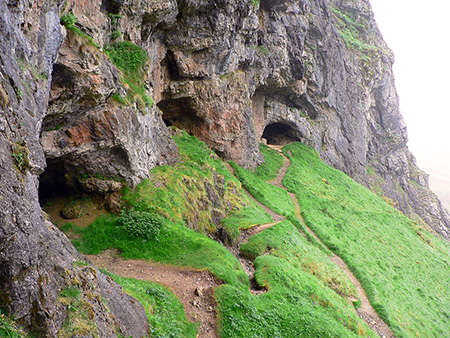
Wojsyl, CC BY-SA 3.0, via Wikimedia Commons
Bone Caves, Inchnadamph (47 miles)
This beautiful and popular walk leads up a limestone valley to visit the dramatic Bone Caves. These cave openings on a steep slope at the foot of a cliff have been excavated and were found to contain the remains of species such as lynx, reindeer and polar bear which once roamed the area. The terrain is a clear path which is rough, narrow and steep at times near the caves. The insides of the caves themselves can be wet and slippery.
Click to visit website: This window New window
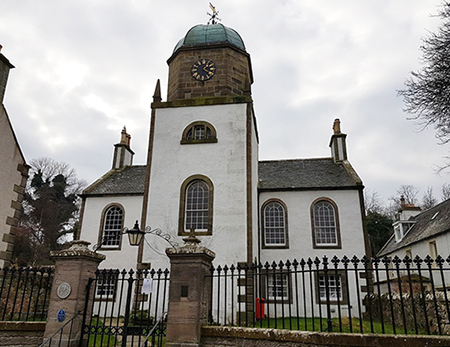
Photo © Rob Farrow cc-by-sa/2.0
Cromarty Courthouse Museum (47 miles)
Step through the door of this elegant eighteenth century Courthouse and come face to face with the tough Highland justice of the time; visit a prisoner, take part in a trial. This grade A listed building is the home to the museum of Cromarty and its neighbouring parish, Resolis. Its collections, exhibitions and learning zone provide a fascinating (and free) insight into the past, present and future of this unique part of Scotland
Click to visit website: This window New window
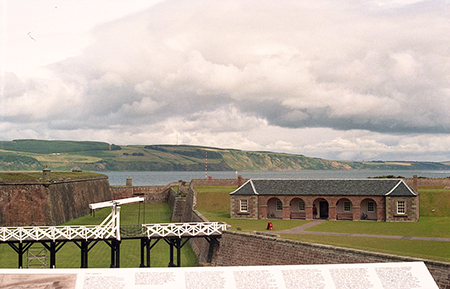
Robert Linsdell from St. Andrews, Canada, CC BY 2.0, via Wikimedia Commons
Fort George, Ardersier, Inverness (56 miles)
Stand in awe of Fort George, one of the most outstanding fortifications in Europe. It was built in the wake of the Battle of Culloden (1746) as a secure base for King George II’s army.
Click to visit website: This window New window
Shearwater Cruises, Ullapool (58 miles)
Operating from Ullapool Harbour in the north west Highlands of Scotland, Shearwater cruises offer trips to Loch Broom and the Summer Isles. Our cruises are approximately 2 hours 15 minutes taking in the region's wildlife and scenery.
Famed for their outstanding beauty, the Summer Isles are a collection of wonderful islands ranging in size from little more than rocks to the last inhabited island Tanera Mor. The isles and sea are home to numerous sea birds, seals, dolphin, porpoise, whales and eagles.
Ullapool is a great base for a highland holiday or day trip from the towns and villages of Scotland. A trip to the Summer Isles is a must for all lovers of Highland scenery, wildlife, nature and history. Many of our passengers return again and again.
Click to visit website: This window New window
Summer Isles, Coigach (63 miles)
The Summer Isles is a group of about 20 islands, rocks and skerries within the Wester Ross Marine Protected Area that sit off the Coigach peninsula. You can walk to the closest, Isle Ristol, with its long white sandy beach, on the lower tides; the furthest, Eilean a Chleirich (Priest Island), lies some 6 miles from shore. The island is a RSPB reserve and is home to seals, otters and seabirds, including over 2000 breeding pairs of storm petrels.
A trip to the Summer Isles is a popular excursion for visitors to Achiltibuie, and a local cruise boat takes passengers on a magnificent trip around them during the summer months.
Click to visit website: This window New window
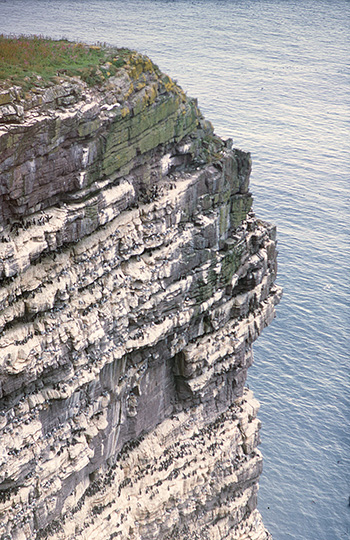
Yottanesia, CC BY-SA 3.0, via Wikimedia Commons
Handa Island
Wildlife Reserve (64 miles)
Each spring, tens of thousands of seabirds migrate to the magnificent Torridonian sandstone cliffs that rise from the Atlantic on the north west coast of Handa Island.
This wild island is an internationally important breeding site for guillemots, razorbills and great skuas that spend the summer breeding and feeding in the rich waters around Handa.
The dramatic cliffs provide stunning ocean panoramas and a chance to spot some of our larger marine species: minke whales, bottlenose and Risso’s dolphins, grey seals and even the occasional orca or basking shark can be seen.
Click to visit website: This window New window

Photo: © Stanley Howe CC-BY-SA 2.0
Clan Gunn Museum
& Heritage Centre (66 miles)
The Clan Gunn Heritage Centre and Museum is housed in the old Parish Church, Latheron which was built in 1734. It was officially opened on 22nd August 1985.
The centre tells the story of the clan from its Norse origins to the present day against the background of the history of the north of Scotland. It also contains one of the best clan archives in Scotland based on many years of research.
Please check their website for updates on when they are open.
Click to visit website: This window New window
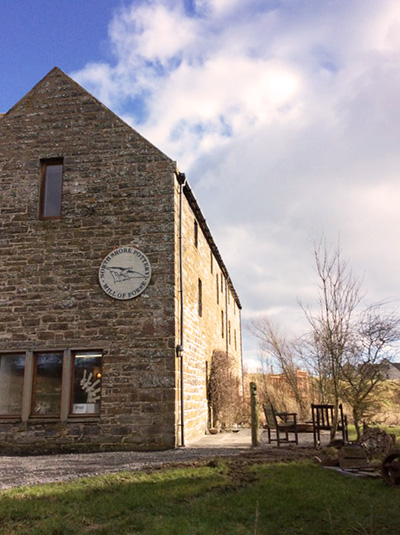
Photo: from website
Northshore Pottery (67 miles)
Northshore Pottery is the studio of Ceramic artist Jenny Mackenzie Ross. Visitors are welcome, and Jenny has a small gallery alonside her workshop. Whatever is current in Jenny’s work is also on display and for sale in the gallery.
Although Jenny works solely with clay, Her work is diverse. She studied Fine Art (sculpture) at Newcastle University in the 80’s, and then worked with Studio Potters in the Highlands of Scotland, before setting up her own studio in ’93. Consequently Jenny’s has roots in both Fine Art and Studio Pottery and correspondingly there are two distict threads in her work. They are seperate but are brought together by the influence of landscape in by Jenny’s Soda firing technique.
Click to visit website: This window New window
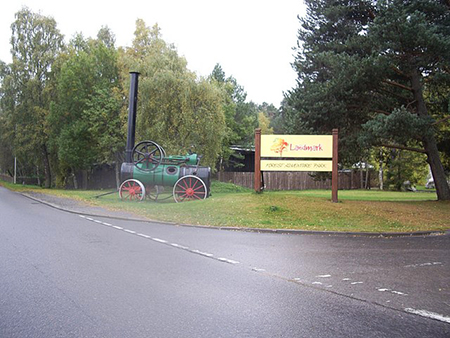
Landmark Forest Adventure Park
Photo: Stanley Howe
Entrance to Landmark 'Forest Adventure Park'
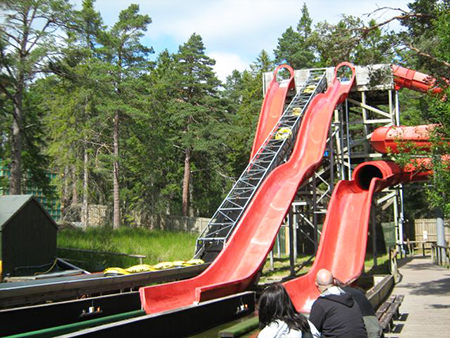
Tine.wv, CC BY-SA 3.0, via Wikimedia Commons
Landmark Forest Adventure Park (68 miles)
Landmark is located in the picturesque village of Carrbridge and is easily accessible right off the A9.
Attractions include Red Squirrel Trail, Ancient Forest Twi-Lights, Networx, Dinosaur Kingdom, Ancient Forest Adventure, Bamboozeleum, Tropical Hot House, Wonderwood, Dino Fossil Dig, Ant City, Kid's Zone and Forest Tower.
Check out the Park Map on their website and see if you can also find: Ropeworx, Skydive, Pinnacle, Tarzan Trail, Wild Water Coaster and Wee Monkey Trail.
In the interests of safety there are some restrictions on use of equipment.
Dogs are welcome but must be kept on a lead at all times. Please clean up after your dog – bags can be obtained at the entry point.
There are onsite dining options - Foresters Restaurant, Pinewood Grill and The Snack Shack.
It is advisable to book your tickets in advance online prior to visiting.
Click to visit website: This window New window

Train pulls away from Aviemore Station
en route for Boat of Garten.
dave conner, CC BY 2.0, via Wikimedia Commons

Boat of Garten Station, Strathspey Railway, 1986
Photo © Ben Brooksbank geograph.org.uk CC BY-SA 2.0

Broomhill Station
Photo © G. Laird geograph.org.uk CC BY-SA 2.0
Strathspey Railway, Aviemore (74 miles)
40 years of Steam Rail Travel in the Highlands.
The Strathspey Railway invites you to travel back in time as you journey through the heart of the Cairngorms National Park. The Park boasts a spectacular catalogue of nature, culture and heritage which includes Britain's highest mountain range, its biggest and best ancient forests, wildlife such as red squirrels, reindeer and ospreys, and so much more! What better way to explore this magnificent locale than on board one of our vintage trains.
Brought back to life in 1978 by a dedicated group of volunteers, this ten mile restored section of the original Highland Railway Line enables you to travel back in time to an era when steam whistles blew, carriage doors slammed shut and there was a familiar click-clack, rhythm of the rails, as the train travels along the track.
Aviemore developed as a small village after the Inverness & Perth Junction Railway (from 1865 the Highland Railway) opened in 1863. During the next few years a handful of houses, primarily for railway staff, a post office and a general store were built.
The period of development saw the station become the main junction between the new route to Inverness and the old route via Boat of Garten. Aviemore’s role as a main line junction ceased with the closure of the route to Forres in 1965. Today the railway operates from the beautifully restored Victorian Station located in the centre of the village.
Select 'Dining On Board' above if you wish to make your trip on board extra special with one of our exclusive Dining Experiences!
Aviemore to Broomhill Return
Setting off from Platform 3 at Aviemore station, through to Boat of Garten and on to Broomhill, the railway takes you on a twenty-mile round trip along part of the original Highland Railway mainline from Perth to Inverness.
Be sure to check our timetable for service times.
Dogs are permitted on these trips, but not in any of the dining vehicles nor in First Class or the saloon. £3 is payable for each dog with you (as at start of 2025).
Assistance dogs travel free and may travel in any part of the train provided they remain on the floor.
Click to visit website: This window New window

Balnakiel Craft Village
Photo ©: Vanhercke Christiaan
geograph.org.uk CC BY-SA 2.0
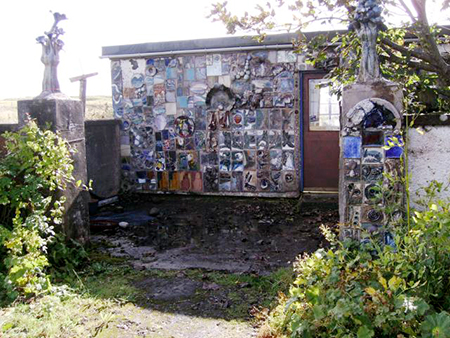
Balnakiel Home and Workshop
Balnakiel Craft Village (77 miles)
Balnakeil Craft Village is situated next to the village of Durness. It is currently home to a range of local artists & businesses including a chocolatier, hairdresser, art galleries, paintings & prints, ceramics, woodwork, glass work & more unique crafts. Not only is the drive along the North Coast 500 to Durness stunning, once you arrive you can also take a boat trip in to Britain's largest limestone sea cave, Smoo Cave, explore the many beautiful beaches and get the ferry that runs to Britain's most north-westerly point at Cape Wrath.
This collection of unusual buildings was built in the mid 1950's as an M.O.D. early warning station in the event of nuclear attack. However, it was never commissioned, and in 1964, the camp born of Cold War fear in the 50's, began its rebirth as a 60's cradle of creativity due to an imaginative development officer of Sutherland District Council who suggested its conversion to a Craft Village.
Advertisements were placed in national newspapers offering the buildings for minimal rent to those who had skills and viable business plans. The Far North Project, as it was known, attracted applicants from all over Britain.
The buildings were empty concrete shells with no plumbing or electricity. Some had no glazing and were barely habitable. The conversion of the bleak and deserted barracks into homes and workshops was daunting.
A coffee shop, pottery and the first commercial transport to Cape Wrath were instigated by founder members, Paul and Yvette Brown. Over the next few years, many new residents arrived, bringing with them children who greatly boosted the school roll in Durness Primary School. Eventually, tenants began pressing the County Council for a chance to buy their buildings, and in 1980 Highland Regional Council offered to sell the properties to the sitting tenants, and the residents took up the offer to buy. There were at that time sixteen independently owned businesses.
This made Balnakeil Craft Village not only the first establishment of its kind in Britain, but also the only one to be owned by its residents, and this situation continues to the present day.
Click to visit website: This window New window

Entrance to Smoo Cave
Photo: Florian Fuchs,
CC BY 3.0, via Wikimedia Commons
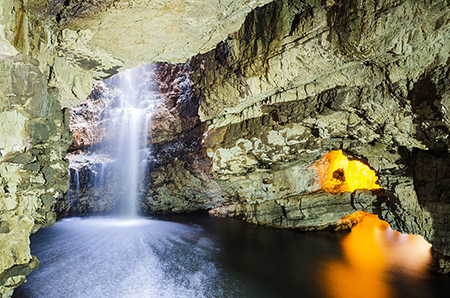
Smoo Cave Second Chamber
Photo: Florian Fuchs,
CC BY 3.0, via Wikimedia Commons
Smoo Cave (77 miles)
Smoo Cave is located in a dramatic location at the eastern edge of the village of Durness, on Scotland's most northerly coastline. Set into limestone cliffs, Smoo Cave is quite large - 200 feet long, 130 feet wide, and 50 feet high at the entrance.
The Allt Smoo falls down an open shaft and flows through a series of huge chambers to emerge at sea level into a deep tidal gorge It is the most spectacular cave in Scotland revealing fascinating evidence of transient occupation by early man.
There are vague stories, likely based on some fact, of the cave being a smugglers' hideaway and linked with tales of the supernatural.
It was formally believed to be the abode of spirits who guarded this entrance to the nether world. The first Lord of Reay (Donald Mackay, Chief of Clan Mackay) was said to have met with the Devil on several occasions and was able to get the better of him.
Among the many local legends surrounding the cave is that of the feared highway man McMurdo, who, during the sixteen century, murdered his victims by throwing them down the blowhole into the cave.
In or about the year 1720, the Clan Gunn made an unexpected raid on the district of Durness. The inhabitants were taken unawares, and pretending to flee to safety enticing the Gunns to follow them into the depths of the Smoo cave where they concealed themselves in the hidden recesses and crevices from which they slaughtered the Gunns to the very last man.
A few years after the 45 rebellion an Inland Revenue Supervisor in the company of another Excise Officer, were ordered by the Government, to suppress the illegal practice of working small stills in the district of Durness. The gaugers bribed one, Donald Mackay by name, who resided in the vicinity of the Smoo Cave, to conduct them in his small boat into the inner chambers of the cave, where distilling was, they had heard, being carried out.
On this particular occasion, the Smoo Burn was in high flood, and on pushing off from the anchorage inside the second chamber of the cave, Mackay observed that the two gaugers were literally terrified, as he rowed them into the spray of the waterfall inside it.
Donald Mackay, purposely maneuvered his craft into dangerous proximity to the crashing furies at the base of the fall and purposely capsized the boat, swimming to safety, leaving the two unfortunate Inland Revenue officers to drown. Rumours has it that one of the bodies has never been found; but his ghost appears in the foam below the waterfall inside the second chamber of Smoo Cave when the burn is in high flood.
Shortly after this 'accident' the distilling plant was tactfully removed to a place of safety and the cave was deserted by the smugglers.
Click to visit website: This window New window

Photo: © sylvia duckworth
Amur Tiger at Highland Wildlife Park
Highland Wildlife Park, Kincraig (82 miles)
In 1986 the Royal Zoological Society of Scotland acquired the Highland Wildlife Park in Kincraig. The Highland Wildlife Park is now home to over 200 amazing animals including native Scottish species as well as rare and endangered animals from the world's mountains and tundra regions.
Click to visit website: This window New window

HelgeRieder, CC BY-SA 3.0, via Wikimedia Commons
Highland Folk Museum, Kingussie (88 miles)
Welcome to Britain’s first open air museum. Explore the unique history and culture of the Scottish Highlands. Visit an authentic schoolroom from years ago.
Click to visit website: This window New window
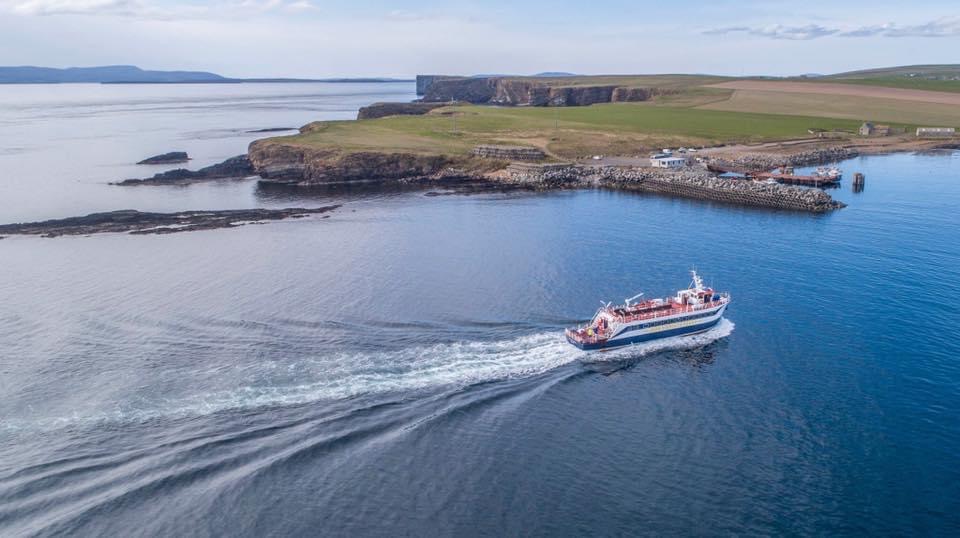
John O'Groats Ferries (100 miles)
Orkney Day Tour
Take a fascinating trip & experience all main attractions in Orkney in just a day! Leave the car with us and enjoy a luxury coach with knowledgeable guides. Island hop across the Churchill Barriers and visit 5 Orkney Islands!
Click to visit website: This window New window
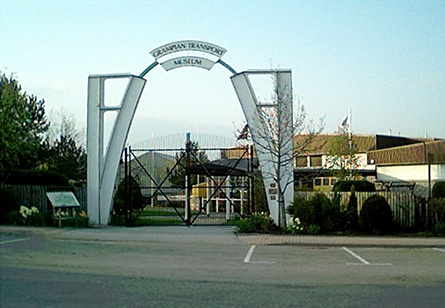
Grampian Transport Museum
Photo by: Stanley Howe / Grampian Transport Museum
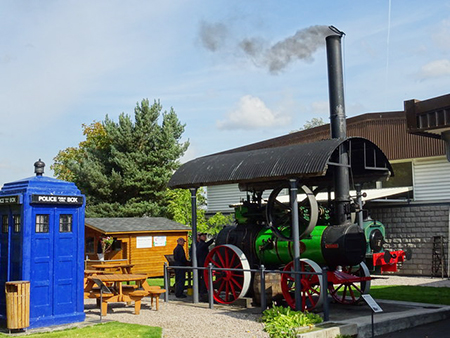
Photo © John M geograph.org.uk CC BY-SA 2.0

Steam Locomotive
Photo by: Karl Brodowsky, CC BY-SA 3.0, via Wikimedia Commons
Grampian Transport Museum (126 miles)
Located in the historic village of Alford, just 45 minutes from Aberdeen, the Grampian Transport Museum boasts an impressive range of transport exhibits, from travelling chariots of the 1800's, to some of the fastest cars ever made.
The museum is a living museum that probes the past, present and future. Many exhibits are climb aboard, hands on and even ride on! The exhibits are updated every year during the closed season, providing a wide range of new and exciting things to see each year.
The museum endeavours to present a fresh exhibition every season and to change at least a third of the vehicle exhibits. To achieve this exhibits from private collections, companies and other UK museums circulate our collections between storage and display. The museum's permanent collection include a Sentinel Steam Wagon, Craigievar Express (a steam car), Birkhall Stationary Engine, Cruden Bay Hotel Tramcar, Mortier Dance Organ, Hero Stage Coach, Travelling chariot and much more.
The Trust has premises alongside the Grampian Transport Museum in Alford, Aberdeenshire, where the buses in the Trust’s care are housed, rebuilt and maintained. Through Grampian Transport Museum, the Trust’s Collection Centre at Alford is open to the public on a limited basis, but arrangements can also be made for a private viewing. The Trust also works closely with the First Group Heritage Trust, housing some of their collection of historic Aberdeen Corporation/Grampian Transport buses.
Throughout the year the museum has an extensive outdoor events programme, with such events taking place as Alford SpeedFest, Grampian Motorcycle Convention, Family Fun Days and How Many Left?
Grampian Transport Museum can trace its history back to the early 1970s when a number of local enthusiasts became conscious of the fact that there was a very active interest in historic transport in the North East of Scotland.
In 1978 at a well-attended public meeting in Aberdeen, the Grampian Transport Museum Association was formed. The new Association's main objective was to work towards the establishment of a Transport Museum and thereafter to administer and develop the Museum.
Building work was completed in September 1982 and the Museum in its present form opened in April 1983. A major extension was built in 1998 to house a new collections care facility, schoolroom, tearoom and workshop, with support from the Heritage Lottery Fund and Scottish Museum’s Council (now Museums Galleries Scotland).
Click to visit website: This window New window
LEGAL INFORMATION
The information and material on this site is provided in good faith for general information only and no part shall form any part of a contract. Amat Estate and its agents assume no responsibility for the accuracy of any particular statement and accept no liability for any loss or damage which may arise from reliance upon the information contained on this website. Links to other websites from these pages are for general information only and Amat Estate and its agents accept no responsibility or liability for access to other material on any website which is linked from or to this website.
© 2021 amatsalmon.com